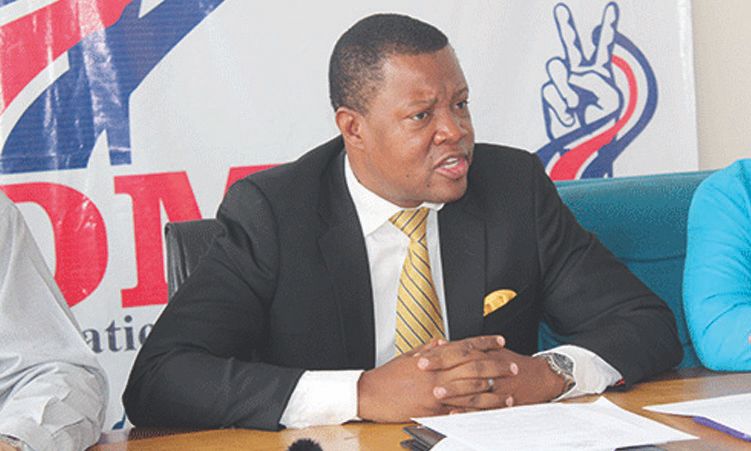18 June 2024
I bring this critical issue of promoting the broadcast of more local content on radio, television and other platforms due to concerning usage patterns, economic implications, cultural impact, and missed job creation opportunities.
The current data reveals that a staggering 80% of music played on local radio stations originates from foreign sources, contributing to a homogenous and limited musical environment.
This reliance on foreign content not only leads to a significant outflow of royalties, thereby economically marginalising Namibian artists, but also hampers the growth and sustainability of our vibrant creative industry.
Furthermore, the prevalence of foreign content dilutes Namibia’s unique cultural identity, stifling the representation of local narratives in our media landscape.
Additionally, the underutilisation of local content denies Namibia opportunities for job creation within the creative industry. The lack of comprehensive surveys further inhibits a nuanced understanding of content usage dynamics.
Therefore, the debate aims to explore and improve legislative, regulatory and other measures (by way of review and recommendation) to enhance the prominence and support of local content on Namibia’s airwaves and television, fostering economic empowerment, cultural enrichment, and job creation.
In contrast to South Africa, the regulations on local content requirements in Namibia are less detailed:
Scope of application: Namibia’s local content requirements apply primarily to radio broadcasting licensees and commercial television broadcasting licensees (excluding subscription television and NBC). This narrower scope means that fewer types of broadcasters are subject to local content quotas compared to South Africa, where regulations encompass public broadcasters, commercial broadcasters, and even subscription television services.
Percentage requirements: Namibia specifies lower minimum percentages for local content. For instance, Namibian radio broadcasters are required to have 15% local music content, while commercial television broadcasters must have 10% local programming. In contrast, South Africa sets higher percentages for television (ranging from 35% to 45% depending on the type of broadcaster) and also has specific hourly requirements for public and commercial broadcasters.
Regulatory detail: South Africa’s regulations provide more detailed guidance on how local content is defined, measured, and reported across different types of broadcasters. This includes provisions for independent monitoring and compliance mechanisms to ensure broadcasters meet their obligations.
In contrast, Namibia’s regulations are less prescriptive in terms of enforcement and monitoring practices.
Overall, while both countries aim to support local content through regulatory frameworks, the approach of neighbouring countries is characterised by more comprehensive and stringent regulations compared to the relatively simpler and narrower provisions found in Namibia.
Promoting more local content on Namibia’s radio and television platforms holds immense potential benefits for the creative industry and artists alike.
By increasing the broadcast of local content, Namibia can create a more diverse and vibrant cultural landscape. Artists, particularly Namibian musicians, some of my personal favourites (Jackson Wahengo, Shishani, Big Ben Kandukira, Gazza, King TeeDee, Top Cheri, YoungT, D-Jay, Josie Kauandenge etc.) and hundreds of content creators stand to gain significantly from this initiative.
Increased airtime for local music and programming not only provides exposure to local talent, but also boosts their chances of earning royalties and expanding their fan base. This, in turn, supports economic empowerment within the creative sector by keeping revenue generated from broadcasts within the country, rather than flowing out to foreign entities.
I must commend Namibia Wildlife Resorts (NWR), among others, for effectively using local talent to promote various exotic resorts and, in turn, boost tourism. This is just one of the ways in which they achieve this goal.
Furthermore, a stronger emphasis on local content fosters cultural enrichment by promoting Namibian stories, traditions, and values through media. By showcasing diverse local narratives, Namibia can preserve and celebrate its unique cultural identity, enriching the overall cultural fabric of society.
This not only enhances national pride, but also strengthens social cohesion by allowing Namibians to see themselves reflected positively in the media that they consume.
To achieve these goals effectively, legislative and regulatory measures must be reviewed and strengthened. This includes expanding the scope of local content requirements to encompass a broader range of broadcasters beyond radio and select commercial television entities.
By setting higher and more specific percentage quotas for local content across all broadcasting platforms, and implementing robust monitoring and compliance mechanisms similar to those in countries doing better than us, Namibia can ensure that local content regulations are effectively implemented and adhered to.
This proactive approach will not only boost the visibility and viability of local artists, but also stimulate job creation within the creative industry by generating demand for new content production and related services.
I therefore move that this House debate this motion and that it be referred to a parliamentary standing committee for scrutiny to consider the following recommendations:
Exploring strategies to increase the prominence of local music on Namibian airwaves. This committee can draw on international examples and engage with stakeholders to formulate and/or improve effective and culturally sensitive policies.
The provision under Rule 28 of the broadcasting regulations, which mandates broadcasting licensees to make reasonable efforts to evenly distribute local content broadcasts daily throughout the performance period, suffers from vagueness and ambiguity.
The term “reasonable efforts” lacks clear criteria, leading to subjective interpretations among broadcasters. This ambiguity could result in inconsistent application of the rule, affecting the equitable exposure of local content across different broadcasters.
Moreover, the requirement to “evenly distribute” local content lacks a precise definition, failing to specify whether it pertains to equal time slots, broadcast frequency, or geographical coverage. This lack of clarity may lead to varying practices among broadcasters, potentially resulting in the unbalanced promotion of local content.
Furthermore, the absence of specific guidelines for measuring compliance poses challenges for broadcasters in maintaining accurate records and demonstrating adherence to the rule, complicating efforts by regulatory bodies to ensure effective implementation and accountability.
And so, while Rule 28 aims to promote regular and fair broadcasting of local content, its vague language regarding “reasonable efforts” and “even distribution” introduces uncertainty and inconsistent interpretations. Clearer definitions and guidelines are essential to improve transparency, consistency, and accountability in enforcing local content requirements across the broadcasting industry.
Furthermore, Rule 30 (record keeping) mandates that broadcasting licensees maintain detailed logs, statistical forms, and records of channels, programmes, and music.
These records are essential for documenting all local content programmes or music broadcast during a performance period, as well as any expenditures related to local content initiatives as outlined in Rule 27(2)(d).
Finally, it is crucial for the committee to evaluate how effectively broadcasting licensees are adhering to these rules. This assessment should include verifying the accuracy and completeness of record-keeping practices, ensuring compliance with distribution requirements for local content, and evaluating the overall effectiveness of measurement methods used to monitor and report on local content broadcasting.
By conducting this assessment, the committee can ensure that regulations are being followed and that local content requirements are being met in a transparent and accountable manner.
Stay informed with The Namibian – your source for credible journalism. Get in-depth reporting and opinions for
only N$85 a month. Invest in journalism, invest in democracy –
Subscribe Now!








